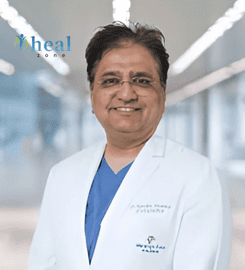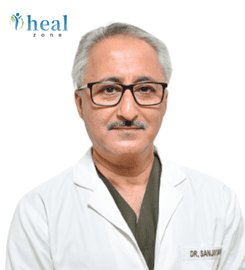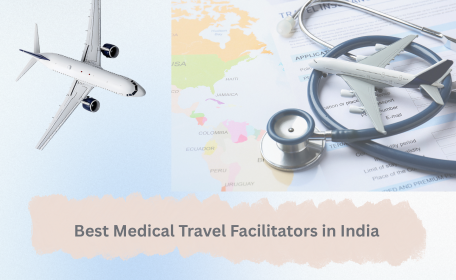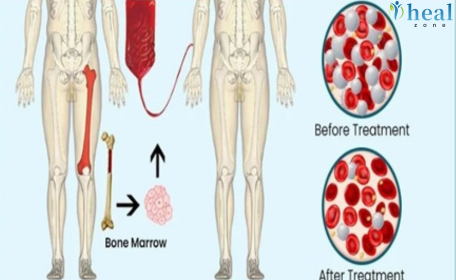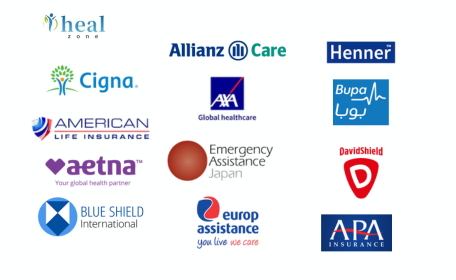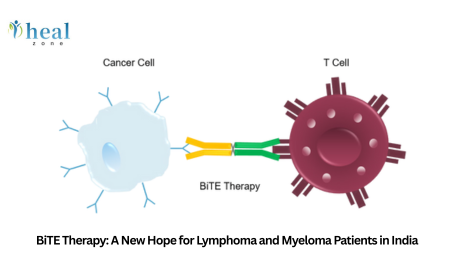Contact us for free opinion
Ankle Injury Treatment Cost in India
Overview
Ankle Injury treatment is affordable in India. The cost of Ankle Injury treatment in India lies between USD -. The exact procedure price depends on multiple factors such as the surgeon's experience, type of hospital, severity of the condition, patient's general condition, etc.
Contact us for free opinion
Top Doctors for Ankle Injury in India
Top Hospitals for Ankle Injury in India
Frequently Asked Questions
Modern cementless hip implants can last 20 years or more, especially with ceramic bearing surfaces and proper post-op care.
For younger, active patients with good bone quality, cementless implants are preferred for their long-term fixation and lower revision risk.
Patients typically begin walking with a walker within 24–48 hours after surgery under supervision.
Most patients can fly home after 3–4 weeks, depending on their recovery speed and physician approval.
Yes. Continued physiotherapy for 6–8 weeks is essential to regain full mobility and strength.
The surgery is performed under spinal anesthesia (with sedation) or general anesthesia, based on medical evaluation.
ACL reconstruction is considered moderate-level surgery. Though it involves reconstruction of a critical ligament, the arthroscopic technique makes it less invasive and typically safe with minimal downtime.
With proper care and physical therapy, an ACL graft can last for 15–20 years or more. Many patients resume sports and lead normal lives post-recovery.
Yes, physical therapy is essential and begins immediately after surgery. It helps restore knee motion, strength, and overall function. A structured rehab program typically spans 3–6 months.
Yes. Patients begin walking with the help of crutches within 24–48 hours. Weight-bearing is gradually increased based on your healing and physiotherapy progress.
You’ll need to stay in India for about 10–14 days:
1–2 days for pre-op tests
1–2 days for hospital stay
7–10 days for initial rehab and follow-up before flying back
India’s ACL reconstruction success rate is 90–95%, particularly with arthroscopic techniques and proper rehab. Most patients regain full mobility and return to pre-injury activities.
Yes, once the bones are fused, the joint cannot move again. It is a permanent solution for pain relief and stability.
Depending on the joint, arthrodesis can take between 1 to 4 hours.
You may lose motion in the fused joint, but pain relief and improved strength often lead to better daily function.
Yes, most patients adapt well and walk without pain. Some adjustments in gait may occur.
Yes, spinal fusion is a type of arthrodesis focused on the vertebrae.
Typically within 2 to 3 weeks post-surgery, after the surgeon’s clearance.
This procedure is best suited for elderly patients with weak bones, severe arthritis, or hip fractures causing pain and mobility issues.
India offers up to 70–80% lower costs than the US, UK, or Thailand, with the same quality standards and expertise.
Most patients begin walking within 1–2 days and recover fully in 6 to 12 weeks, with regular physiotherapy.
International patients typically stay 2 to 3 weeks, covering consultation, surgery, and initial recovery.
India uses high-quality, FDA- and CE-approved implants made of metal, ceramic, or polyethylene, fixed with medical-grade bone cement.
Yes. Indian hospitals use FDA/CE-approved implants from global manufacturers like Zimmer, Stryker, and DePuy.
Yes. Indian hospitals use FDA/CE-approved implants from global manufacturers like Zimmer, Stryker, and DePuy.
Healzone provides virtual consultations and connects you with partner providers for local rehabilitation if required.
Yes. Bilateral knee replacement can be done in one session or staged during the same trip, based on your health condition.
Yes, Indian hospitals use FDA- and CE-approved implants from global brands.
It depends on your condition. If only one knee is severely affected, unilateral surgery is less invasive, less risky, and requires a shorter recovery. However, if both knees are affected, bilateral replacement may be recommended.
It is highly recommended to travel with a caregiver or companion, especially for the first few days after surgery. Healzone can also provide in-country nursing or attendant services if needed.
Yes. You can discuss implant options with your surgeon based on your activity level, age, and budget. Most Indian hospitals offer global brands like Zimmer, Stryker, DePuy, and Smith & Nephew.
Yes. India has a success rate of 95%+ for unilateral knee replacements, comparable to or even exceeding global averages due to experienced surgeons and modern hospital facilities.
No. AC joint separation involves the collarbone and shoulder blade, while shoulder dislocation affects the ball-and-socket joint.
Only mild cases (Type I and II) can heal with rest and physiotherapy. Severe cases (Type IV–VI) usually require surgery.
Yes, most procedures are done under general anesthesia or a regional block for pain control.
Some implants like hook plates require removal after 6–8 weeks, while suture buttons are usually permanent.
Most patients return to full activity within 10 to 12 weeks, with proper physiotherapy.
Yes, Indian hospitals use FDA- and CE-approved implants that meet global standards.
It’s recommended to bring a companion for assistance during recovery, especially the first few days.
You can usually fly within 5–14 days after surgery, depending on your recovery and doctor's advice.
The surgery is performed under general or spinal anesthesia, so you won’t feel pain during the procedure. Post-operative pain is managed effectively using painkillers, nerve blocks, and medications. Most patients report mild to moderate discomfort for a few days, which improves with time and physiotherapy.
Acetabular fixation is typically a one-time, permanent solution. However, some patients may require hardware removal if the implant causes discomfort. This is uncommon and only done after full bone healing.
Yes, Indian hospitals use CE- and FDA-approved implants sourced from top international brands. The materials used (titanium or stainless steel) are durable, biocompatible, and meet the highest safety standards.
Yes. Elderly patients often benefit from combined procedures like fixation plus hip replacement. Pre-operative screening ensures that only those fit for surgery are taken up, and special precautions are followed during recovery.
Absolutely. Most hospitals in India allow one companion to stay with you in your room. Healzone also arranges accommodation near the hospital or in medical guesthouses that cater to families.
Yes. Major hospitals offer multilingual services, including interpreters for Arabic, French, Russian, Spanish, and other languages. Healzone also provides dedicated language coordinators to ease communication during treatment
The procedure is performed under general or regional anesthesia, so you won’t feel pain during surgery. Post-operative discomfort is common in the first week but is well-managed with medications. Most patients report significant pain relief within 5–7 days.
Recovery typically takes 3 to 6 months, depending on your age, injury severity, and compliance with physiotherapy. Most patients walk unassisted by 10–12 weeks and return to sports or active work by 4–6 months.
You will need to use crutches or a walker for the first few weeks. Weight-bearing starts around week 4–6 and progresses gradually with physical therapy support. Full weight-bearing is generally allowed after 8–10 weeks.
Yes. Indian hospitals use FDA- and CE-approved implants made from titanium or medical-grade polymers. These are the same brands used in the US, UK, and Europe. They ensure long-lasting, biocompatible, and secure tendon fixation.
Yes. The repair is designed to be durable and permanent, especially when supported by proper post-op care and physiotherapy. The implants are typically left in place unless there’s a rare complication or patient discomfort.
Yes. Healzone offers virtual physiotherapy guidance and sends home-based exercise protocols. You may also be referred to a local therapist in your country, coordinated with your Indian surgeon.
We recommend having a companion or caregiver travel with you, especially for the first week after surgery. Healzone also offers in-hospital support staff and patient coordinators to help solo travelers during their hospital stay and discharge.
No. Most Indian doctors and hospital staff speak fluent English. Additionally, Healzone provides language interpreters for Arabic, French, Russian, Spanish, and other languages upon request.
Pain is expected in the first few days after spinal fusion surgery, but it is well managed with IV painkillers followed by oral medications. Most patients report a steady reduction in pain within a week. Coblation-assisted and muscle-sparing techniques also help reduce discomfort.
Yes, most patients are cleared to fly 7–10 days after surgery. Flights should be planned with breaks to stretch and move, and patients may be advised to wear a soft back brace for support during the journey.
Absolutely. All spinal implants used in AIS surgeries are FDA- and CE-approved. These include titanium rods, pedicle screws, and modern anchoring systems, sourced from top global brands used in the US and Europe.
Yes, in mild and moderate cases. Observation, bracing, and physiotherapy are effective in patients with curves under 45°. Braces are especially helpful in children who are still growing. Surgery is reserved for severe or progressive cases.
Yes. Healzone arranges free virtual follow-up consultations with your Indian surgeon. You'll also receive:
- Discharge summary
- Implant details and X-ray scans
- Exercise guidelines
- Instructions for your home country physician
In most cases, surgery permanently corrects the curve. Bracing controls curve progression during growth but doesn’t correct existing deformity. If bracing is followed diligently, many children avoid surgery altogether.
Most patients require a 5–7 day stay in India, including pre-surgery evaluation, the procedure, and post-op recovery.
Light activities can usually resume within 2–3 weeks. Full recovery takes around 6–8 weeks, depending on your specific case.
No. The incisions are very small (keyhole-sized), so scarring is minimal and fades over time.
Yes, if medically appropriate and advised by your surgeon. However, recovery may take longer for bilateral procedures.
Yes. Physical therapy is essential for regaining strength, mobility, and function in the ankle.
Pain is managed effectively with medications. Most patients feel relief from fracture pain within a few days post-surgery.
You may begin partial weight-bearing by week 4 to 6, depending on healing. Full walking usually resumes after 10 to 12 weeks.
Implants are usually left in unless they cause discomfort. Removal is rare and done only if needed.
With proper rehabilitation and precautions, the risk of re-injury is very low.
Yes, many hospitals and platforms like Healzone offer remote physiotherapy support via video consultations.
Spinal or general anesthesia is used depending on your medical condition and surgeon’s preference.
Yes. Although ankle movement is eliminated, most patients regain a natural walking pattern with minimal pain and improved stability.
Yes. It permanently fuses the ankle bones. This is a one-time surgery with long-lasting results if post-op instructions are followed.
Yes. In selected cases, a minimally invasive arthroscopic fusion is possible, leading to faster recovery and smaller scars.
Yes. Screws, plates, or rods are commonly used to stabilize the bones during fusion and may remain in the body permanently.
Pain is common in the initial days but is well-controlled with medication. Long-term, the goal is to eliminate chronic joint pain.
This is rare, but delayed or non-union may require bone grafting or revision surgery. Regular follow-ups reduce this risk.
Ankle replacements are long-lasting but not necessarily permanent. With proper care, implants can last 10–15 years or more.
Yes, most patients can walk with minimal discomfort and improved mobility after full recovery, typically by 3–4 months.
For eligible patients, ankle replacement preserves motion and offers better gait mechanics than fusion, which eliminates joint movement.
Pain is well managed using anesthesia during surgery and post-operative medications. Most patients report steady improvement after the first week.
Yes, a structured physiotherapy program is essential for restoring strength, range of motion, and proper walking function.

